AMD Announces Threadripper HEDT and Pro 9000-Series CPUs: 96 cores and 192 threads for Desktops and Workstations
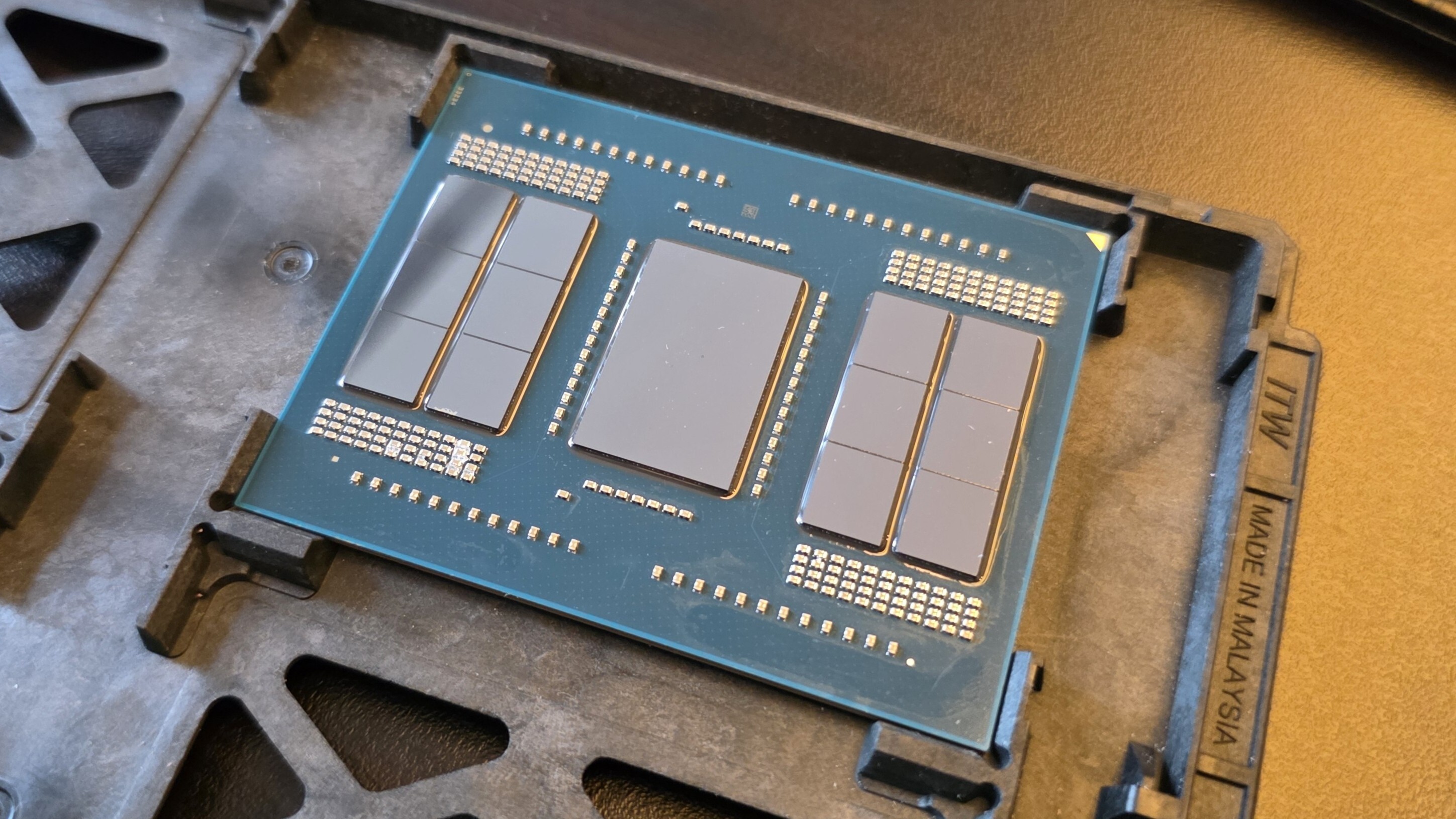
AMD announced its new Zen 5-powered Ryzen Threadripper Pro 9000 WX-series and non-Pro processors here at Computex 2025 in Taipei, Taiwan, touting up to 96 cores and 192 threads in the flagship 9995WX. AMD's newest 'Shamida Peak' Threadrippers bring the benefits of the Zen 5 architecture to AMD's premier WX-Series workstation and non-Pro processors, saying they deliver up to 2.2X the performance in rendering than Intel's fastest competing Xeon-W chips.
AMD also revamped its non-Pro Ryzen Threadripper 9000-series chips, with the flagship 9980X HEDT chip wielding 64 cores and 128 threads. AMD's full Threadripper 9000 series will be available in July.
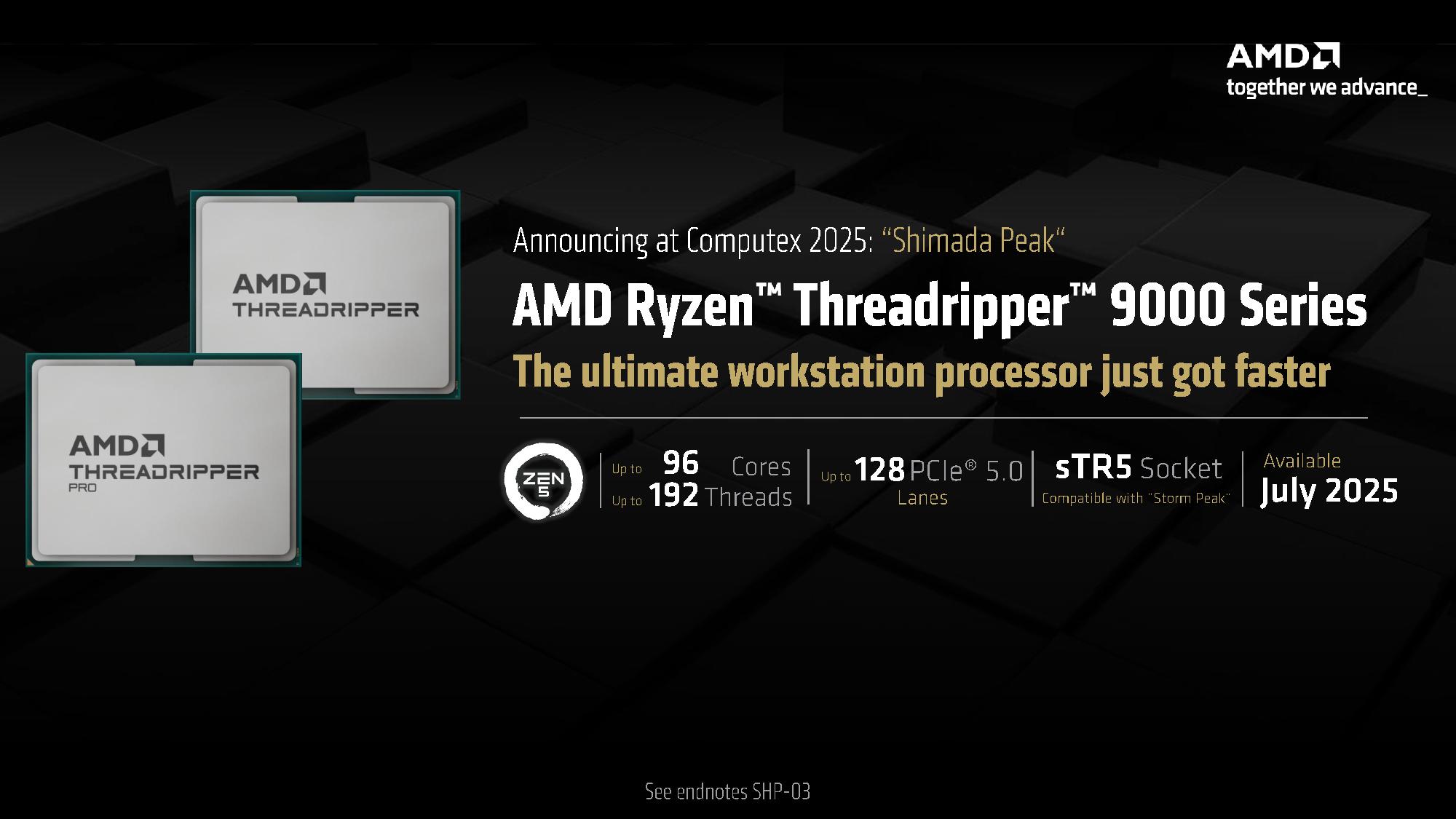
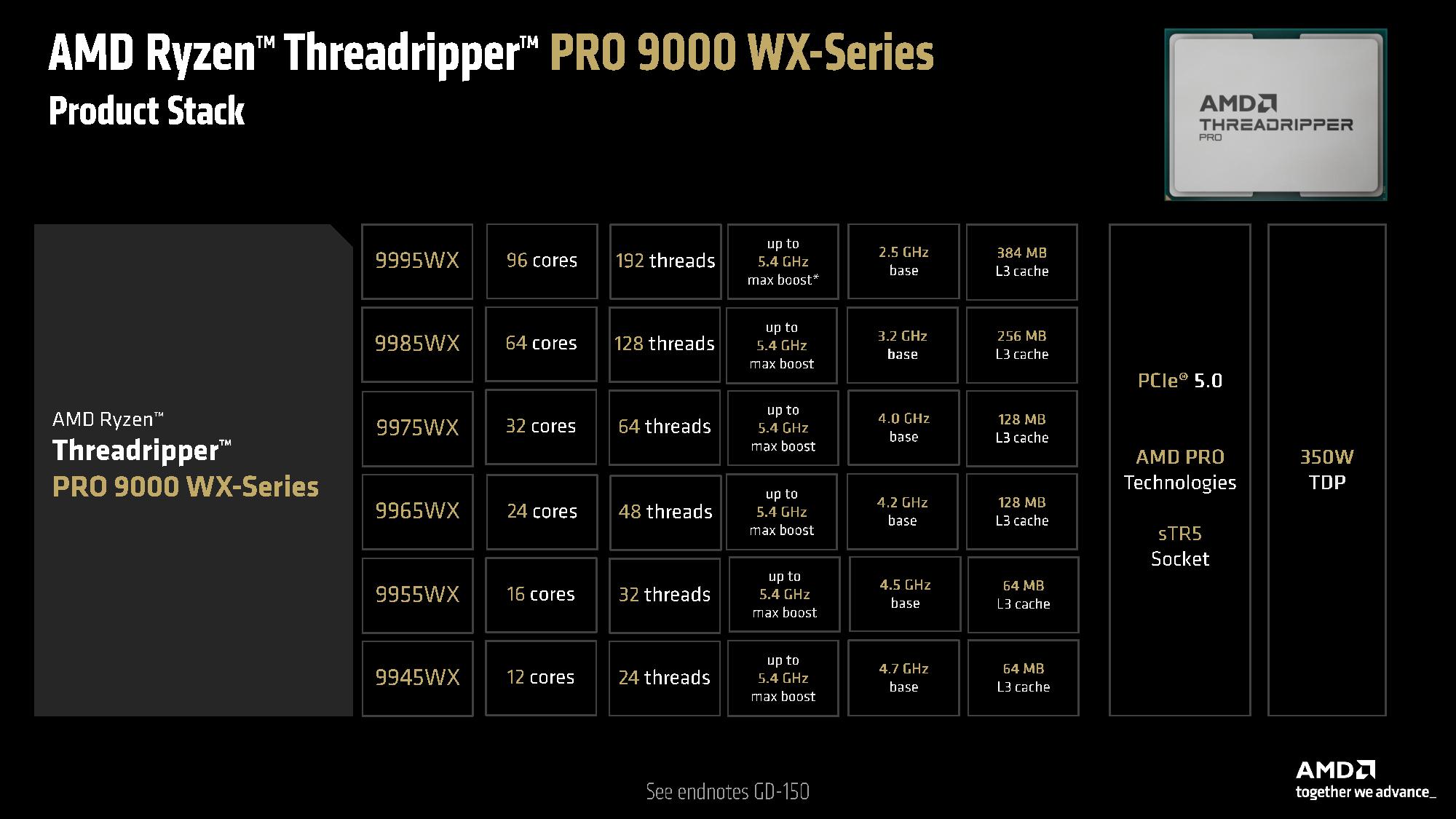
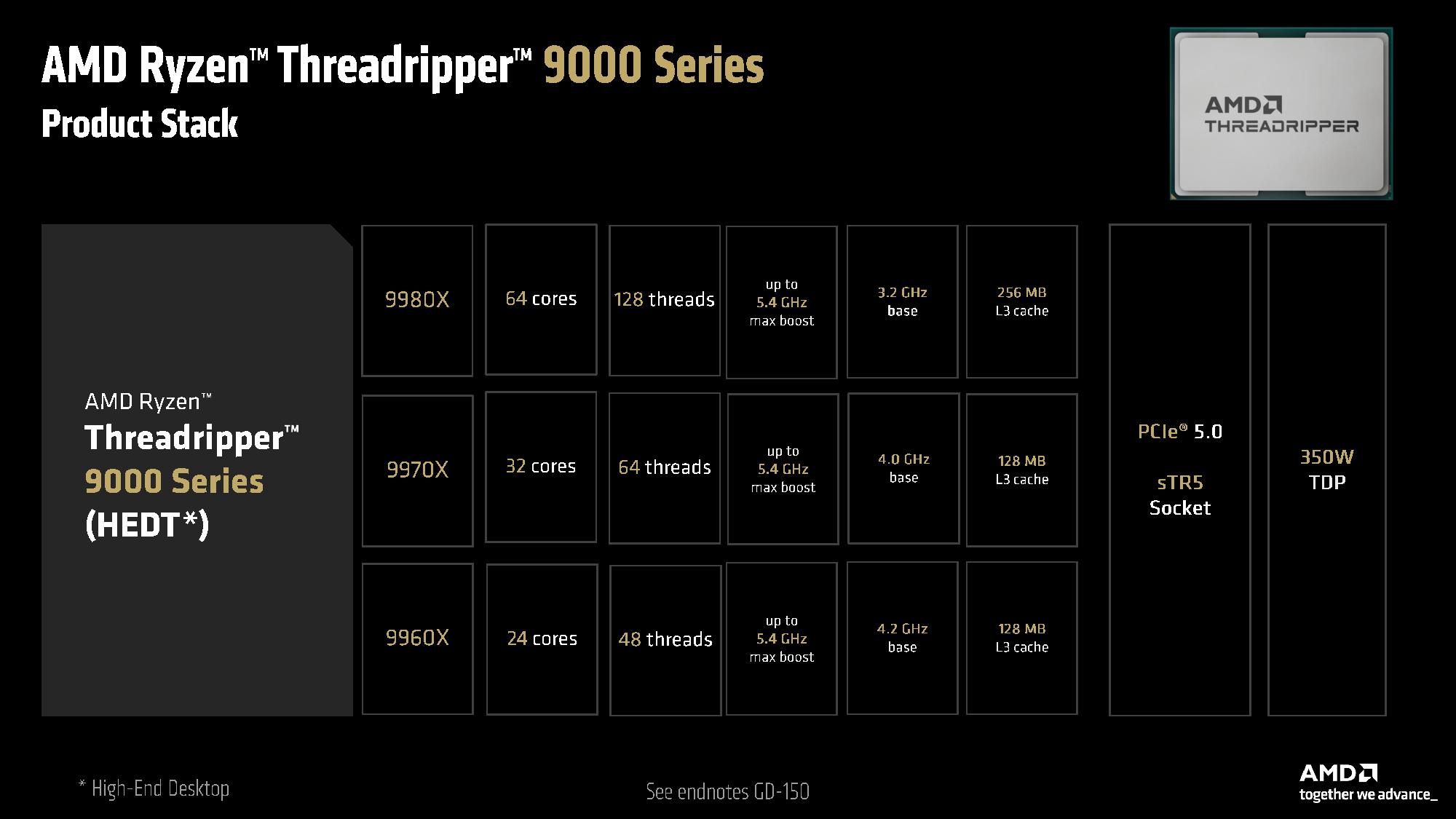
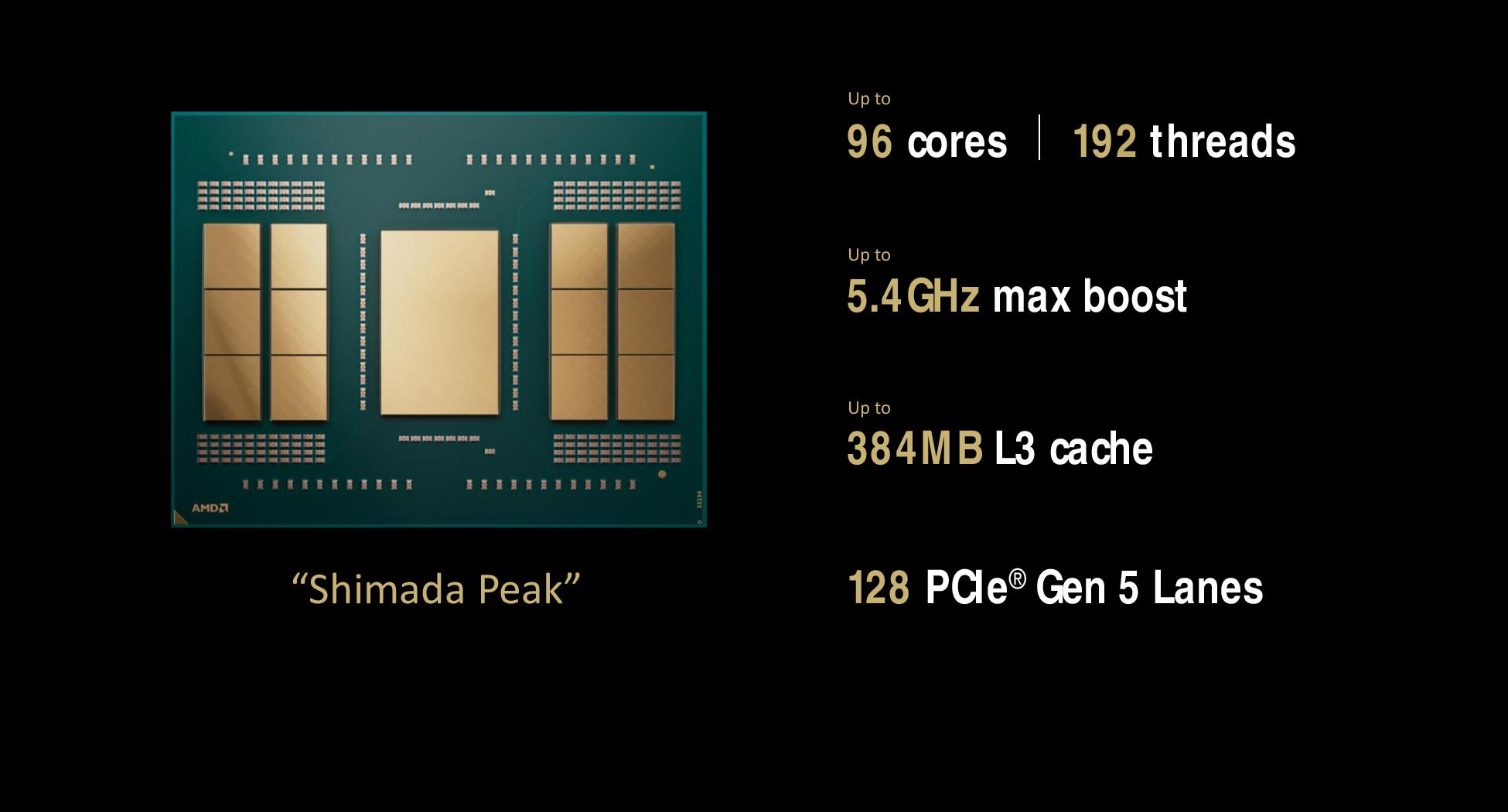
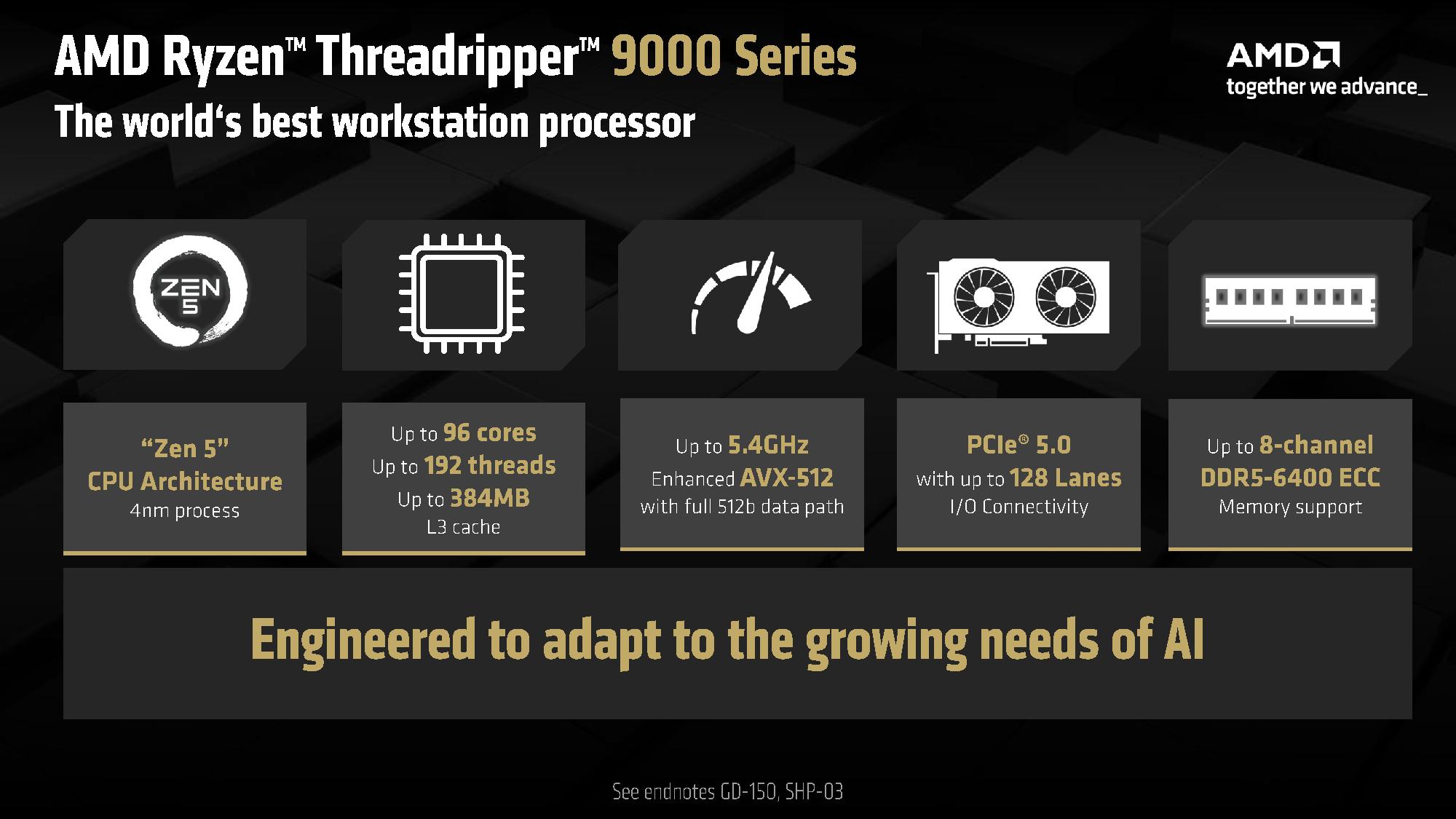
The Threadripper 9000 chips have much in common with their predecessors, the Threadripper 7000 series, with AMD continuing to split the chips into the Pro and HEDT swimlanes. The chips also have the same core counts, base clocks, and cache capacities (up to 384MB) as the prior-gen models across the range of the product stack, but the peak boost clocks have been bumped up to 5.4 GHz for all models, an increase ranging from 100 to 300 MHz. The TDP ratings also remain the same 350W for all models.
The processors provide up to 22% more performance than the prior-gen in threaded workloads, and the lion's share of their increased performance from the jump from the Zen 4 architecture to Zen 5, which imparts a 16% IPC gain, and the move from 5nm to 4nm for the compute dies.
AVX-512 support is also fully baked into the design, dramamatically improving performance in applications that utilize the dense instruction set. The chip also come with all of the same I/O connectivity as before, including up to 128 PCIe 5.0 lanes, but memory support has been bumped up from DDR5-5200 to DDR5-6400. ECC is fully supported and AMD's Pro chips feature the AMD Pro Technolgies suite of RAS features.
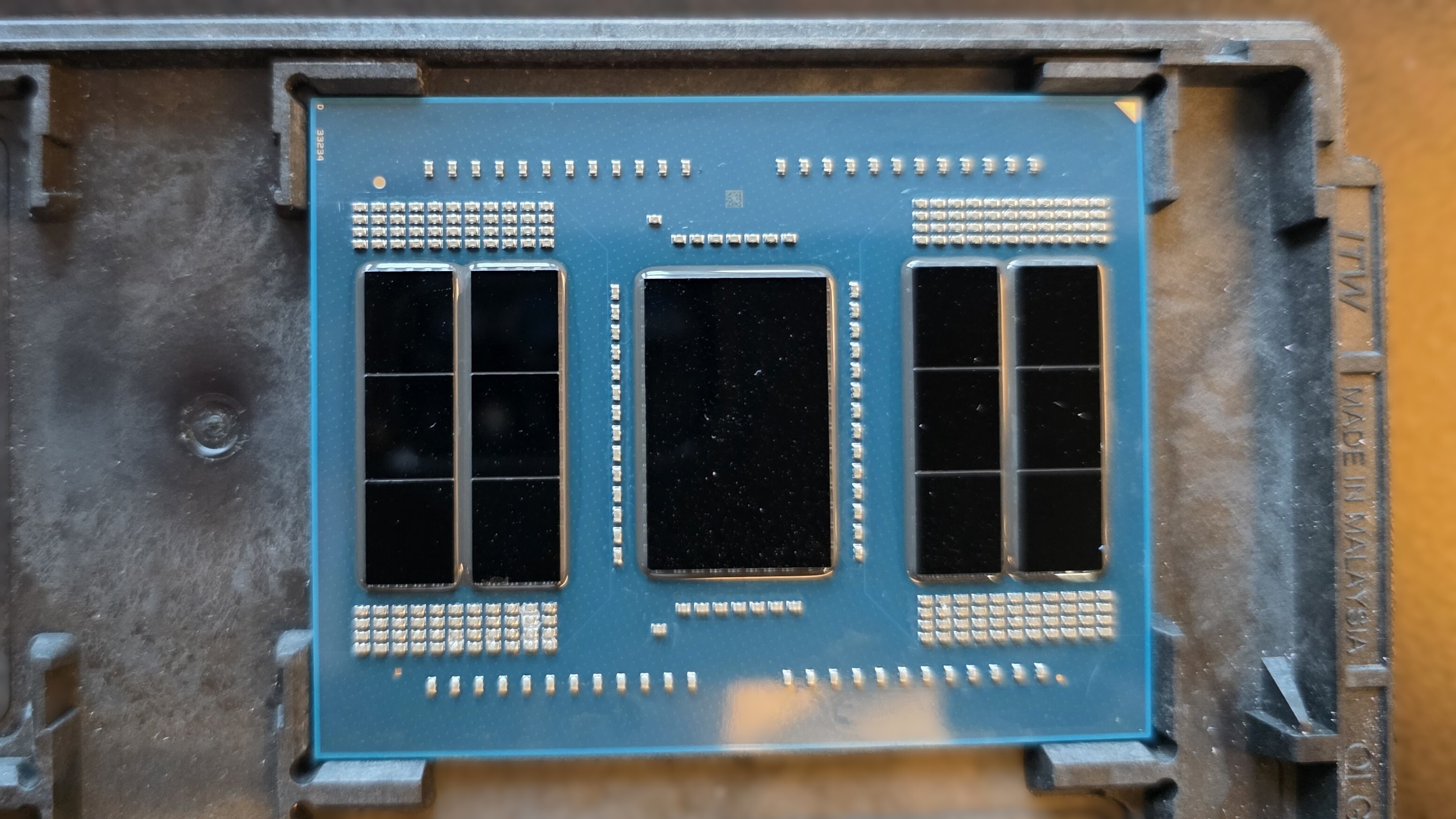
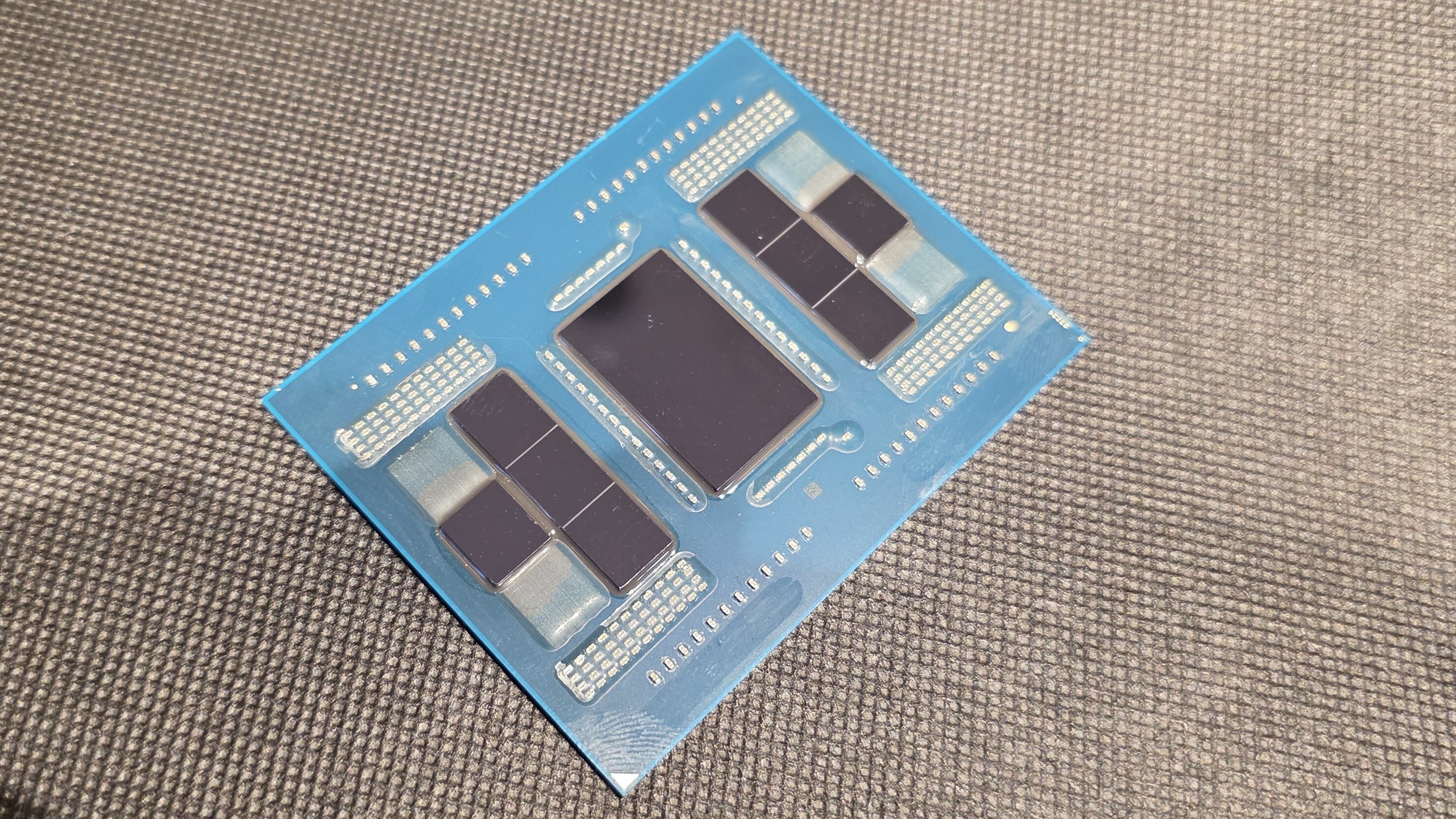
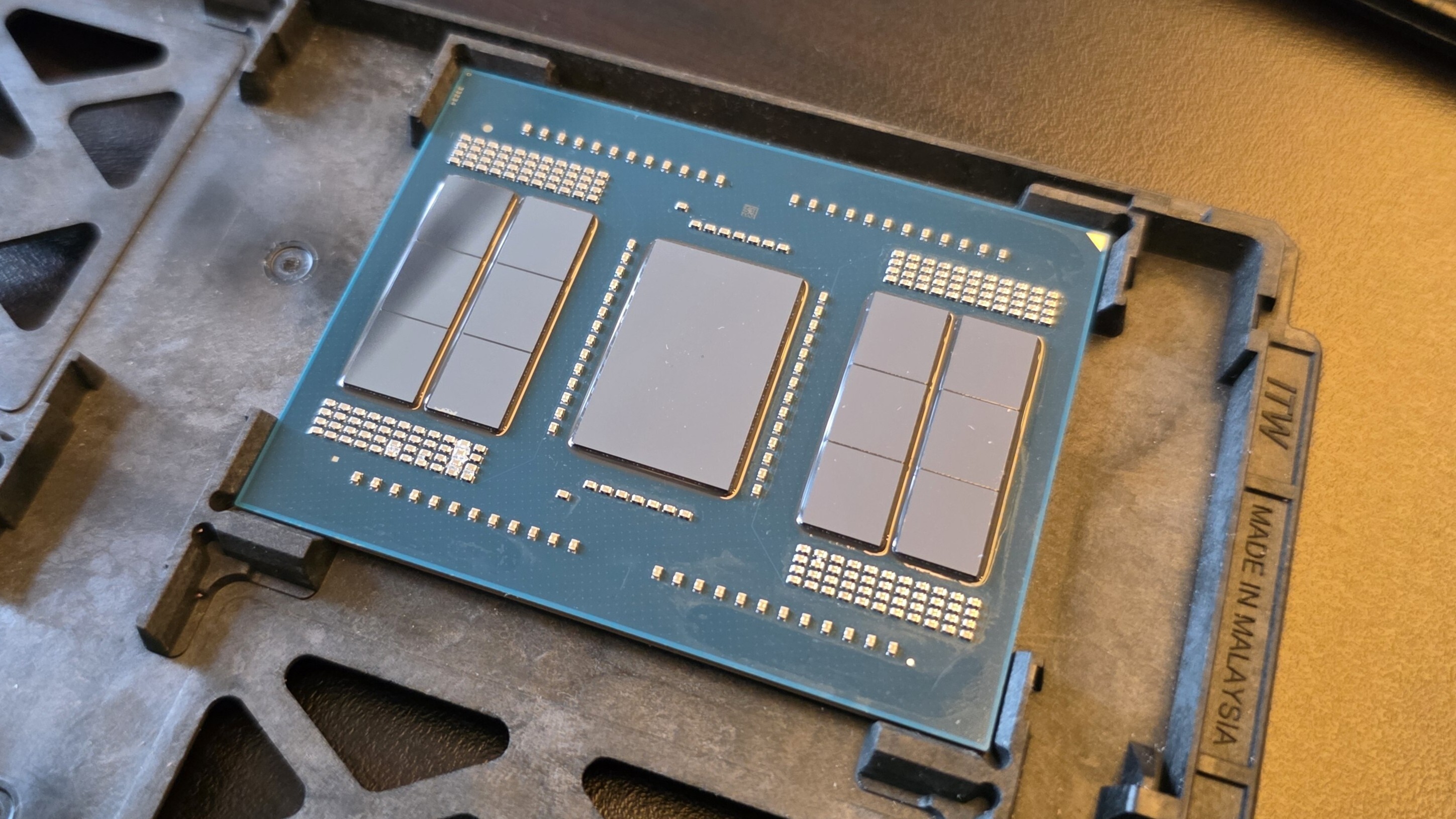
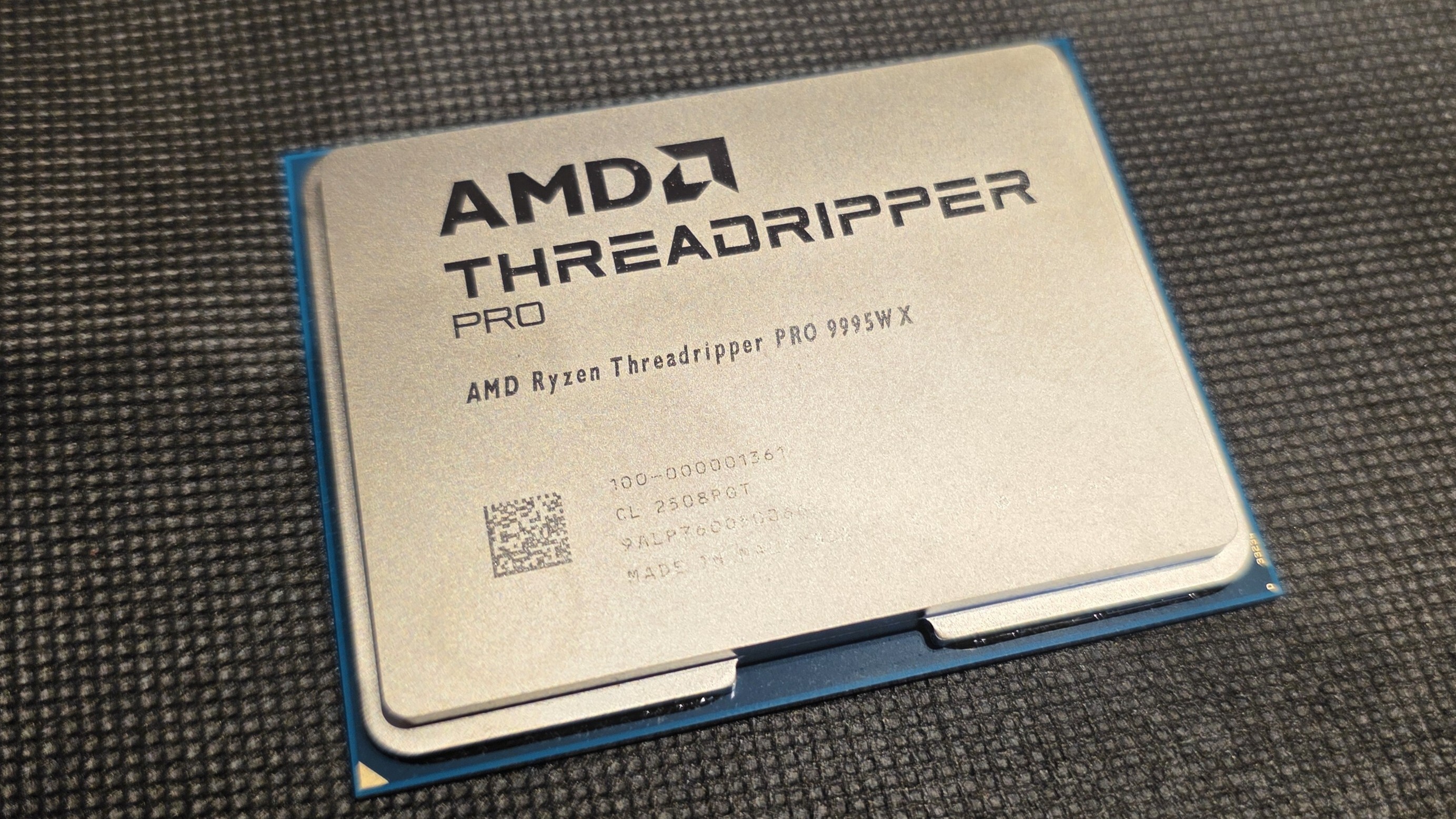
As with all of AMD's Threadripper chips, these models have the same design as AMD's data center chips, in this case, the EPYC 'Turin' 9005 series, but come with special firmware and power tuning to optimize them for workstation platforms.
As you can see above, the chips have a large central 6nm I/O die flanked by rows of 4nm compute dies. With this generation, AMD has rotated the eight-core compute dies 90 degrees and arranged them into four vertical rows of three chips apiece, for a total of 12 compute dies with 96 cores for the flagship 9995WX. AMD removes four of those chips to create the 64-core 9980X, with further adjustments to the number of compute dies for the different models.
Get Tom's Hardware's best news and in-depth reviews, straight to your inbox.
Both families of Threadripper 9000 chips will drop into the same sTR5 socket as the prior-gen chips. The WR90 platform with support for eight channels of memory will house the Pro chips, while value-optmized TRX50 boards with support for four channels of memory house the HEDT processors.
After a BIOS update, the new chips are compatible with existing motherboards. AMD expects a few new refreshed motherboard models from vendors, but it says the chips will largely leverage the existing ecosystem of sTR5 motherboards. As such, all of the existing sTR5 coolers on the market are fully compatible with the new processors.
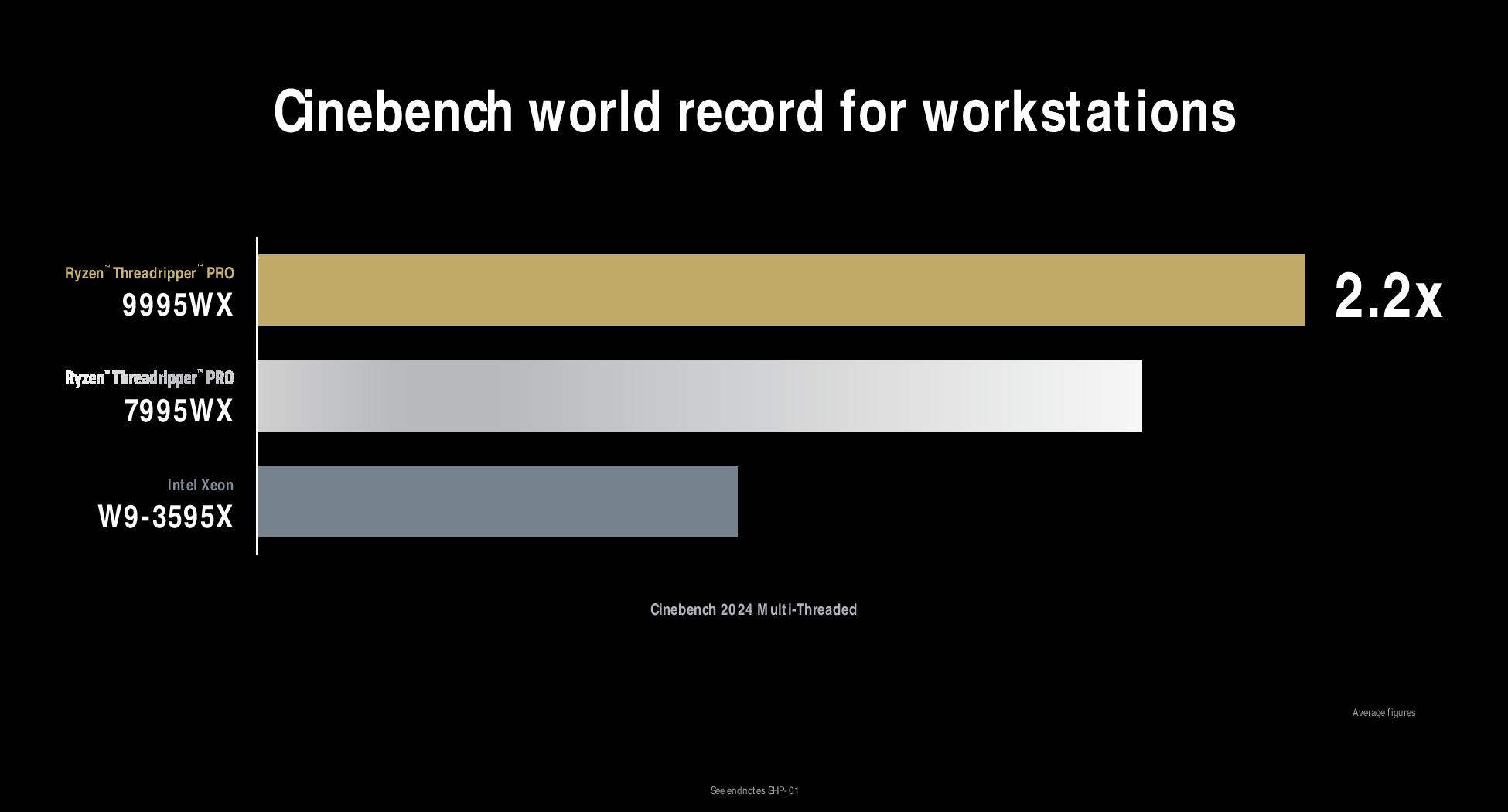
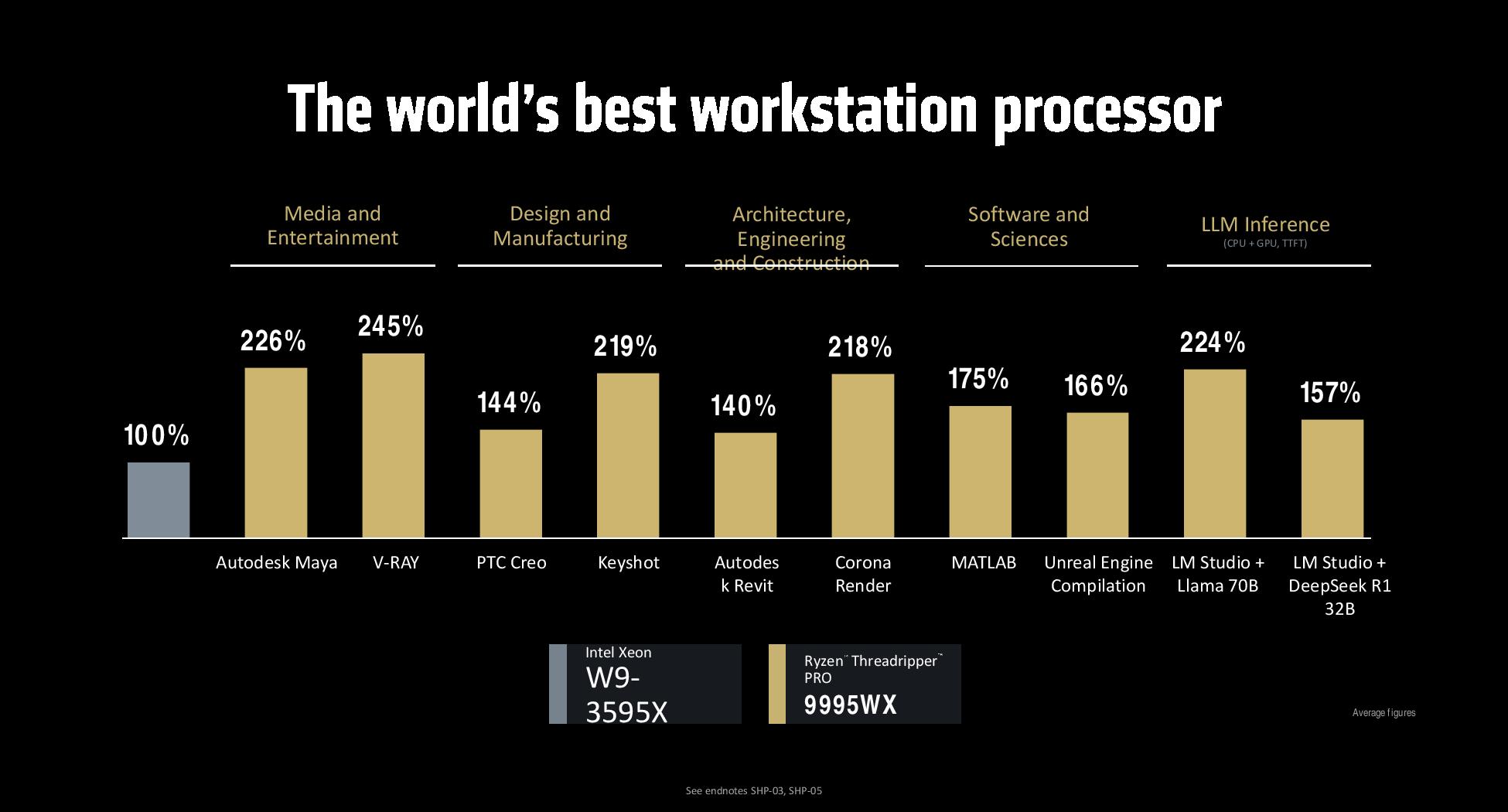
AMD shared a few benchmarks to underline its performance superiority over Intel's Xeon-W lineup, but as with all vendor-provided benchmarks, take them with a grain of salt. We've included the full test notes below.
AMD claims the 96-core Threadripper 9995WX is 2.2X faster than Intel's 60-core flagship W9-3595X in the Cinebench multi-core rendering benchmark, an incredible lead. It's also 22% faster than the previous-gen 96-core Threadripper 7995WX.
AMD also shared a broader spate of benchmarks, with impressive gains ranging from 140% to 245% faster than the W9-3595X in a diverse set of real-world applications like media and entertainment, design and manufacturing, and LLM inference verticals, among others.
Overall AMD's Threadripper 9000 series appears poised to continue its utter dominance over Intel's competing workstation processors. AMD hasn't shared pricing yet, but given that its most affordable previous-gen HEDT model weighed in at $1,400 while the flagship retailed for $4,999, these chips will undoubtedly be pricey. As you'd expect, we'll have our own benchmarks coming around the time of launch in July.


Paul Alcorn is the Editor-in-Chief for Tom's Hardware US. He also writes news and reviews on CPUs, storage, and enterprise hardware.
-
thestryker It'll be really interesting to see what sort of performance Zen 5 brings to Threadripper. If it's like desktop there should be better clock scaling which should directly turn into performance.Reply
Still tired of them calling these HEDT though as they're all just workstation processors. HEDT is dead and buried as it has been for around 5 years.
The cheapest CPU is more than double the most expensive desktop, cheapest motherboard is four times the cost of one which will run said desktop CPU and minimum price of entry for DRAM is more than double that of equivalent desktop capacity (ECC prices are close to the same, but there aren't any high performance ECC UDIMMs). -
Tech0000 wow! This is great news!Reply
Last time Intel and AMD had true X level HEDT (priced for prosumers - not the insanely expensive Xeon WS and PRO class) was in 2019 when intel launched the Core i9 109x0XE series (e.g. 10980XE) on x299 chipset competing with AMD's X corresponding HEDT: Threadripper 3970X, 3960X, 3950X.
Maybe finally we will again get a true HEDT competition between intel's X version of Xeon against AMD's 9000 series Threadripper HEDT version with similar pricing (adjusted for inflation).
Let's hope! This could be very interesting with a true successor belonging to the X platform lineage. My first X was a X58 Motherboard with a core i9 980X. X58 could also accept Xeon (pin compatible) which one could find cheap on ebay once companies upgraded and offloaded these - golden!
I suspect there are a lot of people with old x299 and similar HEDT AMD platforms out there waiting for this...
Intel now needs to answer... -
cracklingice It is really frustrating that AMD keeps trying to call Threadripper HEDT while only having the high end 24 and 32 core HEDT parts and 64 pure workstation part in the lineup. Where are the affordable 12 and 16 core parts for the enthusiasts? I was on X99 until last year because there still is not a reasonable path to upgrade from X99. If AMD had released a 16 core Zen 2 TR4 CPU - I would have bought that. If AMD had released a 16 core x3d Zen 3 CPU - I would have bought that too. And if AMD released a 16 core x3d Zen 5 CPU - I'd probably be buying that one too. Instead AMD seems to think I am a shmuck that will pay HEDT pricing for HEDT core count on the consumer socket. It's not going to happen. I want the cores but I want the I/O more.Reply
Please AMD. Please. Bring back HEDT. I've said it before and I'll say it again. Make the next IOD in a similar way that Apple makes their M silicon. Have two dual channel 24 PCIE lane + chipset link IODs that have a high bandwidth severable connection so that you can have a proper HEDT IOD (albeit with NUMA downsides) that you can also cut in half to make consumer socket chips and make sure to have overlap with the 2 CCD SKUs. HEDT needs to actually be accessible to enthusiasts or it is not HEDT and at $2200 for just the motherboard and entry level processor - it certainly is not that.
I would also settle for finding a way to make TRX50 more reasonably priced and offering reasonably priced 12 and 16 core Threadripper non-pro chips.
I mean seriously - how did we go from people flaming intel over $1700 top of HEDT range chips while they started at $450 to calling people poor for not wanting to spend almost that former top of range price for the entry point or $2500 for the first reasonable option with full 8 core CCDs. It's bizarro world. -
bit_user Reply
Won't happen. Apple's M-line has very poor I/O connectivity. If Apple would offer more I/O, they'd probably do the same as AMD and have a dedicated I/O chiplet. That's because I/O doesn't scale down well, so you're better off using a cheaper node for it.cracklingice said:Make the next IOD in a similar way that Apple makes their M silicon.
For an I/O-heavy CPU, like ThreadRipper, it would be especially nonsensical to go backwards and integrate the IO in the compute dies.
Just wanted to point out that by using 6-core CCDs, the 24-core ThreadRipper has a higher cache-to-core ratio. In other words, it has the same amount of L3 as the 32-core model, but costs much less. The 7960X also has the same 4 memory channels and 48 PCIe 5.0 + 24 PCIe 4.0 lanes, all for $1.5k.cracklingice said:$2500 for the first reasonable option with full 8 core CCDs. -
cracklingice Reply
Very strongly agree Stryker.thestryker said:Still tired of them calling these HEDT though as they're all just workstation processors. HEDT is dead and buried as it has been for around 5 years.
The cheapest CPU is more than double the most expensive desktop, cheapest motherboard is four times the cost of one which will run said desktop CPU and minimum price of entry for DRAM is more than double that of equivalent desktop capacity (ECC prices are close to the same, but there aren't any high performance ECC UDIMMs).
X299 was last HEDT from Intel and TR4 was last HEDT from AMD. AMD moved HEDT core count to consumer socket with HEDT prices and for some reason people rejoiced getting less while paying the same. Meanwhile AMD also doubled the cost HEDT used to be to make Lite Workstation. Threadripper non Pro has started at 24 cores with eye watering prices ever since Zen2 and unlike consumer socket parts does not seem to ever really get a discount.Tech0000 said:Last time Intel and AMD had true X level HEDT (priced for prosumers - not the insanely expensive Xeon WS and PRO class) was in 2019 when intel launched the Core i9 109x0XE series (e.g. 10980XE) on x299 chipset competing with AMD's X corresponding HEDT: Threadripper 3970X, 3960X, 3950X.
Maybe finally we will again get a true HEDT competition between intel's X version of Xeon against AMD's 9000 series Threadripper HEDT version with similar pricing (adjusted for inflation).
Let's hope! This could be very interesting with a true successor belonging to the X platform lineage. My first X was a X58 Motherboard with a core i9 980X. X58 could also accept Xeon (pin compatible) which one could find cheap on ebay once companies upgraded and offloaded these - golden!
I suspect there are a lot of people with old x299 and similar HEDT AMD platforms out there waiting for this...
Intel now needs to answer...
I mean, it is just moving from Zen 4 to Zen 5 after all. It's not like they were reinventing the wheel here.passivecool said:Yet another 20% generational performance increase from AMD. Boring. -
cracklingice Reply
You entirely misunderstood my post. I want them to fuse two IODs together to make effectively a dual socket Ryzen on a single package. By having the connection entirely in silicon it would be higher bandwidth and lower latency that way. Likely also much cheaper than trying to use another form of silicon bridge such as an interposer or embedded bridge.bit_user said:Won't happen. Apple's M-line has very poor I/O connectivity. If Apple would offer more I/O, they'd probably do the same as AMD and have a dedicated I/O chiplet. That's because I/O doesn't scale down well, so you're better off using a cheaper node for it.
For an I/O-heavy CPU, like ThreadRipper, it would be especially nonsensical to go backwards and integrate the IO in the compute dies.
Just wanted to point out that by using 6-core CCDs, the 24-core ThreadRipper has a higher cache-to-core ratio. In other words, it has the same amount of L3 as the 32-core model, but costs much less.
Regarding your statement about the 24 core - that is true - but if you run something that would benefit from both local cache and more than 6c/12t such as a game - you run into the issue of jumping cross CCDs and the gain the latencies and cache misses associated with that. Thus why I do not want 6 core CCDs. -
bit_user Reply
I guess I'm still confused, but that's okay.cracklingice said:You entirely misunderstood my post. I want them to fuse two IODs together to make effectively a dual socket Ryzen on a single package. By having the connection entirely in silicon it would be higher bandwidth and lower latency that way. Likely also much cheaper than trying to use another form of silicon bridge such as an interposer or embedded bridge.
So, are there games which run worse on a R9 9900X than R5 9600X? That's how you'd know whether the cross-CCD penalty is something you should worry about. I'd look for such supporting data on this, because real-world outcomes don't always match our intuition about these things.cracklingice said:Regarding your statement about the 24 core - that is true - but if you run something that would benefit from both local cache and more than 6c/12t such as a game - you run into the issue of jumping cross CCDs and the gain the latencies and cache misses associated with that. Thus why I do not want 6 core CCDs.
IMO, the biggest rip-off about the 7960X is the motherboard. For the CPU, you're paying like double the price of a R9 9950X, but you get 50% more cores, double the L3 cache, double the memory bandwidth, and more than double the I/O. However, the cheapest motherboard I can find on Newegg is $900. So, that kind of stings. (Edit: there's a Gigabyte for $600, on Amazon.) And then there are the RDIMMs for it.
Anyway, it's certainly not a cheap platform to be on, but that doesn't seem way out there, to me, if you really need its capabilities.
P.S. I see some deals on refurb workstations with 7960X. That seems like the easiest way to get onto the Threadripper platform. If I really needed to, I'd probably look for such a system with a decent warranty, from a reputable seller.